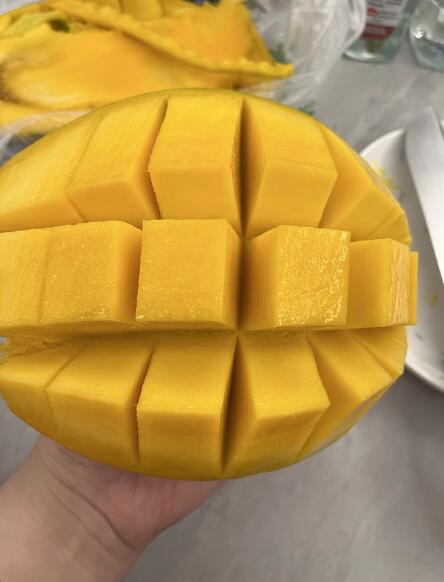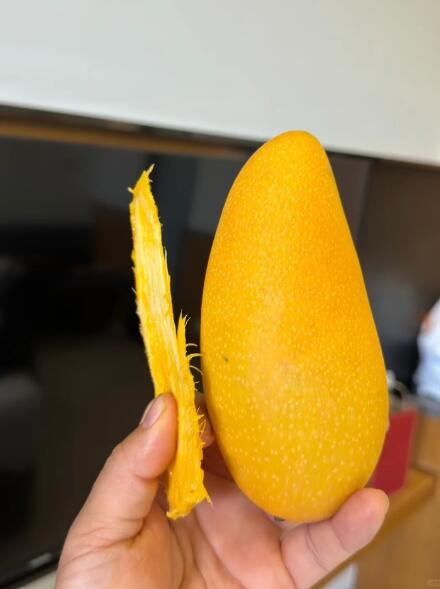That day, I was in a Melbourne supermarket, as usual, looking for ingredients among the shelves. The bright mangoes in the fruit section attracted my attention like a magnet.
Looking at these plump, golden fruits, I suddenly had a question: is it mango season in Melbourne right now? This simple curiosity inspired me to explore the world of mangoes.
Distribution and growth of Australian mangoes
Scientifically known as Mangifera indica (Anacardiaceae), mangoes are native to India and Myanmar. In Australia, they are widely cultivated in the Northern Territory (Darwin and Katherine regions), Queensland, Western Australia and northern New South Wales. I once met a Queensland mango grower who enthusiastically described his lush and extensive mango garden, and the scene fascinated me.
Melbourne’s unique growing conditions
Melbourne’s climate is clearly not tropical, so can mangoes grow here? In the tropics, mango trees can grow up to 40 metres high, with dense branches and leaves forming a huge shade. But in Melbourne, they are mostly grafted and range in height from 3 metres (dwarf varieties) to 15 metres.

Mango trees are self-pollinating, with flowers blooming at the tips of branches. However, cold, wet and windy weather can prevent the fruit from growing. A friend of mine in Melbourne tried growing mango trees, but an exceptionally cold, wet and windy spring resulted in his mango trees not bearing fruit that year.
Quality and price of Australian mangoes
Australian mangoes are world-famous for their large, buttery flesh and perfect balance of sweetness and acidity. One bite is like tasting a high-class dessert.
Last summer, during a beach holiday, I bought an Australian mango from a local shop – its rich, aromatic sweetness amazed the whole family. When fully ripe, these mangoes glow with an orange-red and reddish hue.
Price fluctuations
In Australia, mangoes usually cost between A$2 and A$3.50 per kilogram, although prices can vary depending on the season and location. I remember one winter when mangoes were much more expensive in the city centre supermarket than in the summer. Despite this, mangoes remain a popular staple food – supermarkets are always full of customers carefully selecting their favourite mangoes.
Compare mango varieties and their unique characteristics
Which country produces the sweetest mangoes of all the varieties? In Australia, the Honey Gold mango has overtaken the Kensington Pride mango as the most popular variety thanks to its higher sugar content, especially towards the end of the mango season.
They are also attractive in appearance with their apricot colour. I tried both varieties at a fruit tasting event – the Honey Gold mango’s rich sweetness won me over.
Production hotspots
Where are Australian mangoes mainly grown? Queensland produces around 22,000 tonnes annually, accounting for 43% of the national total. To be more specific:
- Marebba and Tinbra account for 55%,
- Bowen and Booderee for 33%,
- and Central and Southern Queensland for 11%.
- A friend who visited a Queensland mango farm was impressed by the size of the orchard.
Big mangoes and the ‘mango capital’
Bourne in Queensland is the home of Australia’s iconic big mango. This landmark was built in 2002 (at a cost of around 90,000 Australian dollars) by the Whitsundays Regional Council to celebrate Bourne’s booming mango industry and greet visitors near the town’s information centre.
I had always dreamed of seeing it for myself. Bourne is known as Australia’s ‘mango capital’ and produces around one million tropical mangoes each year. Its golden beaches and nearby coral reefs add to its charm – friends who have been there say the scenery is unforgettable.
The nutritional value of mangoes
Mangoes are rich in a variety of essential nutrients:
- Vitamin treasure trove: Rich in vitamins A, C, B6 and folic acid, which are essential for boosting immunity, protecting eyesight and promoting cell growth. When my eyesight deteriorated due to overuse, my mother insisted that I eat mangoes because they are good for the eyes.
- Antioxidant champion: Compounds such as mangiferin protect cells from damage and reduce the risk of chronic diseases. A health-conscious relative is convinced that eating mangoes will help him live a long life.
- Digestion aid: The high fibre content aids digestion and lowers cholesterol. Whenever my stomach is upset, mangoes come in handy.
- Blood pressure regulator: Potassium helps maintain healthy blood pressure – a tip I often share with my father, who has high blood pressure.
- Extra nutrients: Copper, calcium and iron round off the nutritional profile of mangoes. Some studies have shown that mangoes can reduce the risk of cancer, benefit the skin and hair, and even improve eyesight.
Selecting, storing and seasoning mangoes
Selecting the perfect mango
How do you know when a mango is ripe? Try these tips:
- Squeeze test: Gently press on the mango. A slight softness (not mushy) indicates ripeness. This method has never let me down.
- Smell test: Breathe in close to the stem – a sweet smell indicates ripeness. A mango-savvy friend taught me this.
- Don’t just focus on the colour: the colour of mangoes can vary, so don’t judge their ripeness just by looking at them. Once, I bought an unripe, bland-tasting mango based on its colour.
Storage tip
For unripe mangoes, place them in a paper bag at room temperature to speed up ripening. Once ripe, refrigerate them to slow down further softening. I use this tip every time.
Flavour combinations
The following combinations enhance the flavour of mangoes:
- Tajín: a mixture of chilli, lime and salt gives a tangy kick. My first taste in a Mexican restaurant opened my eyes.
- Chilli powder: mixed with cumin and garlic, it gives a sweet, salty and spicy kick, and is loved by those who like it hot.
- Lime and salt: a classic combination that enhances the sweetness. Locals at beachside stalls recommended this refreshing combination to me.
- Other combinations:
- Fresh herbs: Mint, coriander or basil add a fresh, aromatic note. I can’t have mango salad without mint.
- Spices: Cinnamon or nutmeg intensify the flavour of desserts. A little spice can change the taste of mango pudding.
- Tropical combinations: Coconut, lime or berries provide a nice contrast. Mango-coconut smoothies are still my favourite.
